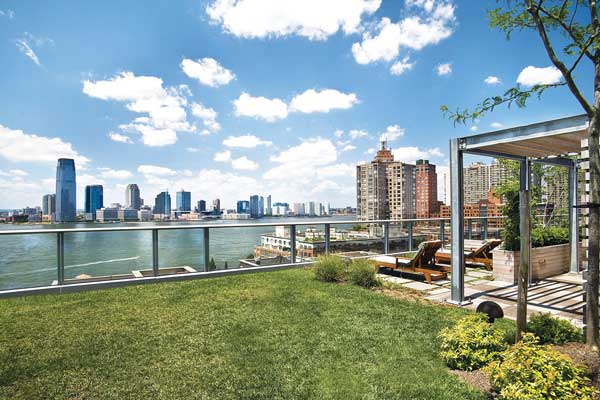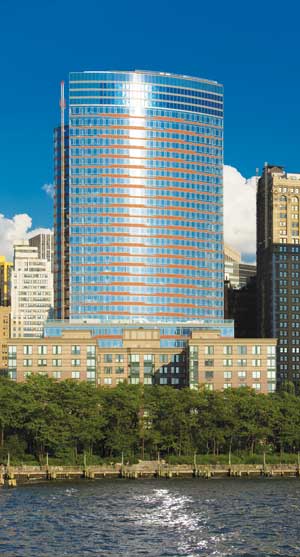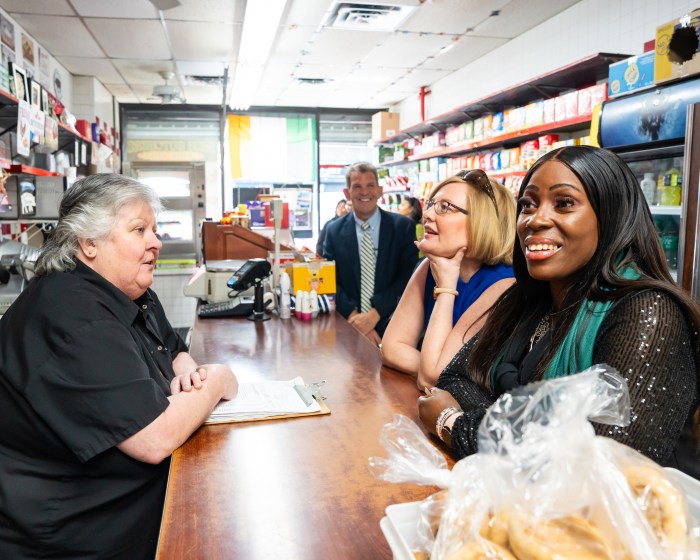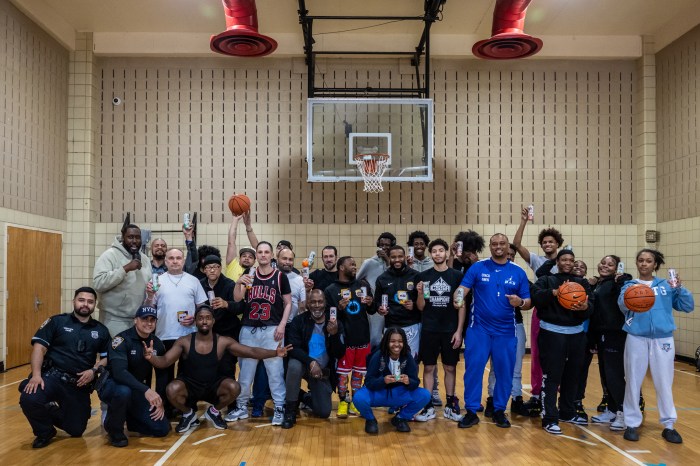 [/media-credit]
[/media-credit]
- A view from the Visionaire’s rooftop lawn overlooking the Hudson River. The lawn is one of the building’s many eco-friendly features.
BY HELAINA N. HOVITZ | Everywhere you turn, more of New York City is going green.
The environmentally friendly practice conserves natural resources, helps make the air cleaner and helps people breathe better. We may spend about 90 percent of our day indoors, but the air quality inside can actually be much worse than it is outside.
Enter eco-friendly residential buildings, the very first and the best of which are right in Battery Park City.
 [/media-credit]
[/media-credit]
- The exterior of the Visionaire in Battery Park City.
The Solaire, erected in 2003, was America’s first LEED-certified (Leadership in Energy and Environmental Design), residential building. Located at 20 River Terrace and standing 27-stories tall, it consumes 35 percent less energy and 50 percent less water than most residential buildings, and solar panels generate much of the building’s electricity. In 2006, the 26-story Verdesian was built at 211 North End Ave., followed by the Visionaire at 70 Little West St. in 2008.
All three buildings are owned and were developed by The Albanese Organization; the Visionaire is their best yet, having improved on its predecessors.
These LEED-certified residential high-rises offer increased access to natural light, improved indoor air quality, energy-efficient appliances, and in-room occupancy sensors for lighting and heating, ventilation and air-conditioning (H.V.A.C.). Where water conservation is concerned, the buildings treat it, purify it, and re-use it, as well as capture their own storm water-runoff.
The structures themselves were all built using 50 percent recycled construction materials.
Development of the Solaire, created in accordance with the Battery Park City Authority’s “green guidelines,” began in 2000. The developers kept powering through in 2001, when, perhaps, there was a greater need for purified air.
It costs more to develop LEED-certified buildings, and therefore rents in the buildings are generally higher. The Solaire and Verdesian are rentals, but the Visionaire is for buyers only. A 600-square-foot studio in the Visionaire runs about $670,000 and a three-bedroom runs closer to $2 million.
Reduced energy bills may eventually offset the cost. If you’re an allergy sufferer, you may end up saving on doctor’s bills, too, since these buildings are just plain healthier to live in.
Fresh air is filtered into each apartment and humidified during winter months — especially helpful for those who suffer from allergies. The air quality throughout the buildings is noticeable; many of the building’s residents testify to improved “wellness.”
“I have a history of asthma and hypersensitivity to odors and allergens in the air,” said Visionaire resident Rod McCowan, 52. “The air is crisp and pure. I can tell I’m breathing better.”
A self-proclaimed “stickler for a quality building,” McCowan is most impressed with other details like the recycling room, which includes a battery shoot and a recycling program for old electronics. He said he “barely hears street traffic,” and that the apartment always sees a whole lot of natural light, even when it’s overcast, thanks to floor-to-ceiling glass windows.
Pierre Desautels and his wife, Suzanne, first rented at 99 Battery Place before moving into the Visionaire. An engineer with a big hand in the development of Battery Park City in the 1980s, Desautels worked on the Winter Garden of the World Financial Center and was more than familiar with the area. The energy conservation aspect was one of the most important factors in his decision to buy.
“My parents were a product of the depression, and were always very careful about using only what you need,” said Desautels, 58. “If you don’t need it, you save it.”
Desautels said he feels he’s getting a good bang for his buck.
“I’ve seen other buildings in Battery Park and elsewhere that are 20 percent more expensive and don’t even begin to compare,” said Desautels.
Cost was also a factor for McCowan and his wife, who approached Manhattan with trepidation. They were concerned they wouldn’t be able to find something affordable that they’d be “proud to call home.”
“Battery Park City actually came at a bit of a discount relative to the [rest of the] city, and yet most of it was brand new,” said McCowan.
“More people know about green development now, so we’re seeing a wider availability of experience and materials,” said Russell Albanese, president of the Albanese Organization. “Paints, adhesives, and even carpeting are being made to deliver better conservation of natural resources.”
Albanese added that plans are currently in the works for even more green buildings in the neighborhood.

















